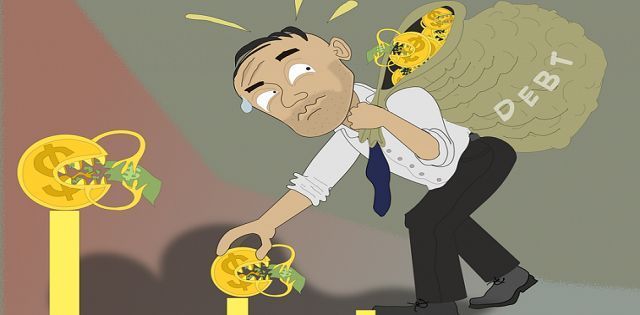The International Monetary Fund (IMF) has forecast Ghana’s debt-to-GDP ratio to increase to 76.70 percent in 2020, above the 56.6 percent forecast for the whole of the Sub-Saharan African region.
This is according to the Sub-Saharan Regional Economic Outlook released by the IMF on Thursday, October 22, 2020.
The current projections for Ghana is also higher than the sub-regional median value of 61.7 percent.
The recent forecast represents a 13.9 percentage point increase in the country’s debt-to-GDP ratio relative to 62.8 percent recorded in 2019.
The Fund however expects the country’s debt-to- GDP ratio to decline marginally to 74.7 percent in 2021 in its recent forecast.
According the data provided by the IMF, Ghana’s debt-to-GDP ratio averaged 44.0 percent between 2010 and 2016. It however increased to 58.3 percent in 2017 and rose further to 59.1 percent in 2018.

Current trends in Ghana’s public debt stock.
Recent macroeconomic and financial data released by the central Bank of Ghana (BOG) in September shows that the country’s debt stock currently stands at 68.3 percent as at End-July 2020 having increased from 67.2 percent in June this year.
In nominal terms,the total stock of public debt has increased from GHS 258.8 billion in June 2020 to GHS263.1 billion at end of July this year.
The Bank of Ghana attributed the rise in the debt stock to low revenue and increasing expenditures over and above the target in the first seven months of the year.
The Bank of Ghana stated in the most recent monetary policy committee report released on Monday, September 28, 2020 that “provisional data on budget execution for the first seven months, showed an overall budget deficit of 7.4 percent of GDP, against the revised target of 7.2 percent of GDP as the COVID-19 pandemic continued to impact fiscal operations.
“The primary balance also recorded a deficit of 3.7 percent of GDP, above the planned target of 3.4 percent of GDP. Over the review period, total revenue and grants amounted to GH¢27.7 billion compared with the target of GH¢26.8 billion. Total expenditures and arrears clearance amounted to GH¢56.2 billion, above the target of GH¢53.3 billion”.

The Bank of Ghana pointed out that all these developments impacted heavily on the stock of public debt.
The year-on-year analyses showed an increment of 28 percent over the past one year. This is because in July 2019, the total stock of public debt was GH206.1 billion as compared to the current figure which stands at GHS263.1 billion in July 2020.
The total stock of public debt has for the past seven months of the year been on the rise. In January, the stock of public debt stood at GHS219.6 billion representing 57.0 percent of GDP. This however, increased steadily to end the first quarter at 61.4 percent, with a nominal value of GHS236.7billion. As at the end of the second quarter in June 2020, public debt galloped to GHS 258.8 billion which accounts for 67.2 percent of the county’s GDP.
According to the current data released by the BOG, domestic debt component of the total debt stock has increased from GH¢122.1 billion (31.7% of GDP) in June 2020 to GHS125.1billion (32.5% of GDP) at the end of July 2020. The domestic debt as at the end of January 2020 stood at GHS107.5 billion representing 27.9 percent of GDP.
Conversely, external debt was GH¢138.0 billion (35.8% of GDP), representing 52.4 percent of the total public debt as at the end of the second quarter of 2020. In July 2019, external debt was GHS107.8 billion representing 30.9 percent of GDP.



















